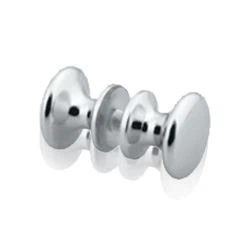Modular office construction has gained significant popularity in recent years due to its efficiency, cost - effectiveness, and flexibility. As a building parts supplier, I have had the privilege of being involved in numerous modular office projects and understanding the key building parts that are essential for a successful construction.
Foundation and Structural Components
The foundation is the backbone of any building, and modular offices are no exception. In modular office construction, pre - fabricated foundation systems are often used. These can include concrete slabs or steel frames that are designed to support the weight of the entire structure. The steel frames are typically made of high - strength steel, which provides excellent load - bearing capacity while being relatively lightweight. This makes them ideal for modular construction as they can be easily transported and assembled on - site.
For the vertical structural elements, steel columns and beams are commonly employed. These components are pre - engineered to precise specifications, ensuring that they fit together seamlessly during the assembly process. The columns support the weight of the upper floors and transfer the loads to the foundation, while the beams provide lateral stability and distribute the loads evenly across the structure.
Wall and Partition Systems
Wall and partition systems play a crucial role in defining the internal spaces within a modular office. There are several types of wall systems available, each with its own advantages.
Drywall is a popular choice for interior walls. It is relatively inexpensive, easy to install, and can be finished with a variety of paints and wallpapers. Drywall panels are typically made of gypsum plaster sandwiched between two layers of paper. They are lightweight and can be cut to size on - site, making them highly adaptable to different office layouts.
Another option is glass walls, which are often used to create open and modern office environments. Glass with Spider Fitting is a great example of a high - end glass wall system. The spider fittings provide a sleek and minimalist look, allowing for maximum transparency while maintaining structural integrity. Glass walls can also improve natural light penetration, which is beneficial for the well - being and productivity of office workers.
Partition walls are used to divide larger office spaces into smaller rooms or cubicles. These can be made of a variety of materials, including wood, metal, or plastic. Folding partition walls are particularly useful as they can be easily opened or closed to change the layout of the office as needed.
Roofing Systems
A reliable roofing system is essential to protect the modular office from the elements. There are several types of roofing materials that can be used in modular office construction.
Metal roofing is a popular choice due to its durability, energy efficiency, and low maintenance requirements. Metal roofs can be made of steel, aluminum, or copper, and they come in a variety of colors and styles. They are resistant to fire, wind, and hail, making them suitable for a wide range of climates.
Membrane roofing is another option, especially for flat or low - slope roofs. These roofs are made of a single - ply membrane that is installed over a deck or insulation layer. Membrane roofs are waterproof and flexible, and they can be easily repaired if damaged.
Flooring Systems
The flooring system in a modular office not only provides a comfortable surface to walk on but also contributes to the overall aesthetic of the space.
Carpeting is a common choice for office floors as it provides a soft and quiet surface. It comes in a variety of colors and patterns, allowing for customization to match the office decor. Carpeting also helps to reduce noise levels, which is beneficial in an office environment.


Vinyl flooring is another popular option. It is durable, easy to clean, and resistant to stains and scratches. Vinyl flooring can mimic the look of wood, stone, or tile, providing a cost - effective alternative to these more expensive materials.
Hardwood flooring is a high - end option that adds a touch of elegance to the office. It is durable and can last for many years with proper maintenance. However, it is more expensive than other flooring options and may require more care.
Interior Fixtures and Fittings
In addition to the major structural and finishing components, there are numerous interior fixtures and fittings that are used in modular office construction.
Folding Shelf Bracket is a useful accessory for creating additional storage space in the office. These brackets can be easily installed on the wall and folded up when not in use, saving valuable floor space.
Lighting fixtures are essential for providing adequate illumination in the office. LED lights are a popular choice due to their energy efficiency and long lifespan. They can be installed in recessed ceilings, pendant lights, or wall sconces to create a variety of lighting effects.
Stainless Steel Handrail Fittings are used for staircases and balconies to provide safety and support. Stainless steel is a durable and corrosion - resistant material, making it suitable for both indoor and outdoor applications.
Conclusion
Modular office construction requires a wide range of building parts, from the foundation to the interior fixtures. As a building parts supplier, I understand the importance of providing high - quality products that meet the specific needs of each project. Whether you are looking for structural components, wall systems, roofing materials, or interior fittings, we have the expertise and products to help you build a successful modular office.
If you are planning a modular office construction project, I encourage you to contact us to discuss your requirements. Our team of experts can provide you with detailed information about our products, offer technical support, and help you find the best solutions for your project. We are committed to providing excellent customer service and ensuring that your modular office construction project is a success.
References
- Building Construction Handbook, McGraw - Hill Education
- Modular Construction: A Guide to Building with Prefabricated Components, Wiley



